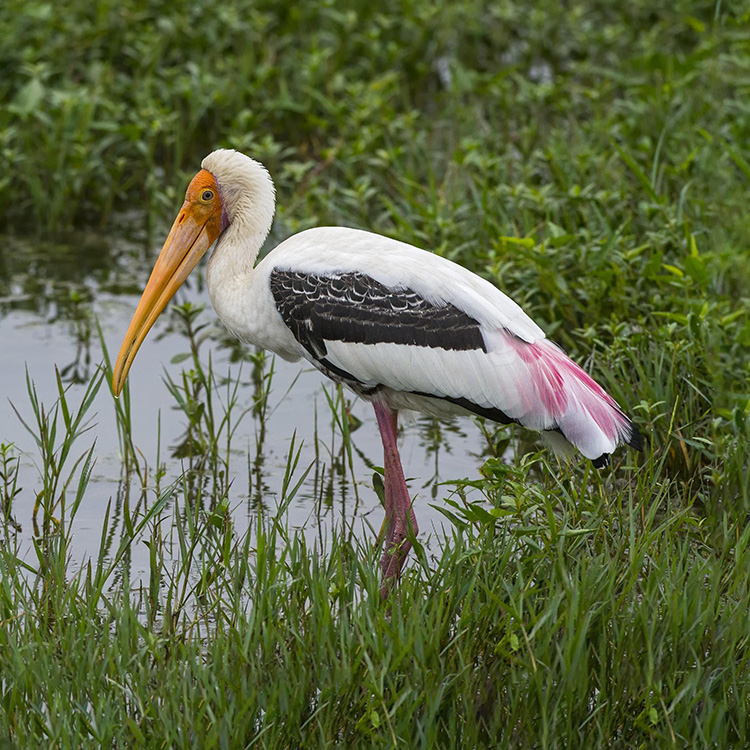With their snow-white bodies, delicate pink tertial feathers, and long yellow-orange beaks, the Painted Stork (Mycteria leucocephala) looks as if nature herself brushed them with an artist’s hand. These large wading birds are among the most striking sights of South Asia’s wetlands, where they move with a mix of elegance and purpose.
Painted storks thrive in shallow lakes, marshes, and riverbanks, often gathering in noisy colonies. They feed by a method called tactile foraging—wading slowly with open bills in the water, snapping shut the moment a fish or frog touches the sensitive tip. When dozens of them line the water’s edge in perfect rhythm, it resembles a living watercolor painting across the wetlands.
One of their most remarkable traits is their communal nesting behavior. Painted storks nest in large colonies, often alongside herons, ibises, and cormorants, filling tall trees with clattering activity. Parents are attentive, tirelessly bringing food for their chicks, and the sight of hundreds of nests side by side creates a bustling “avian city.”
Culturally, painted storks hold a place of quiet reverence. In parts of India, they are seen as symbols of abundance and renewal, closely tied to the cycles of water and monsoon. In sanctuaries like Bharatpur’s Keoladeo National Park, their return each year is celebrated as a sign of nature’s resilience.
Yet, like many wetland birds, they face threats from habitat loss, pollution, and water diversion. Many of the lakes and marshes they depend on are shrinking, and breeding colonies vanish when water levels drop too low. Conservation programs now focus on restoring wetlands and protecting traditional nesting sites, ensuring that the stork’s artistry continues to grace the skies.
To watch a painted stork in flight—broad wings outstretched, pink feathers catching the sun—is to witness a brushstroke of life across the canvas of the sky. They are not just birds of the water; they are symbols of balance, reminding us how beauty and survival intertwine in fragile ecosystems.
